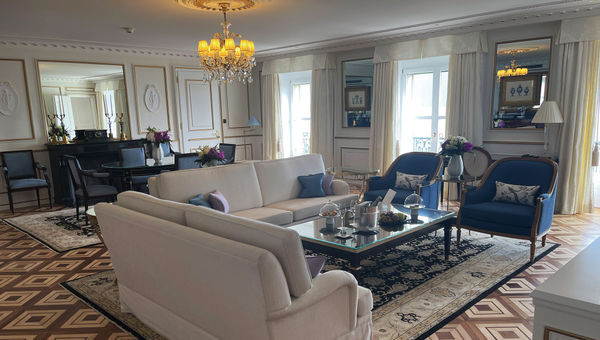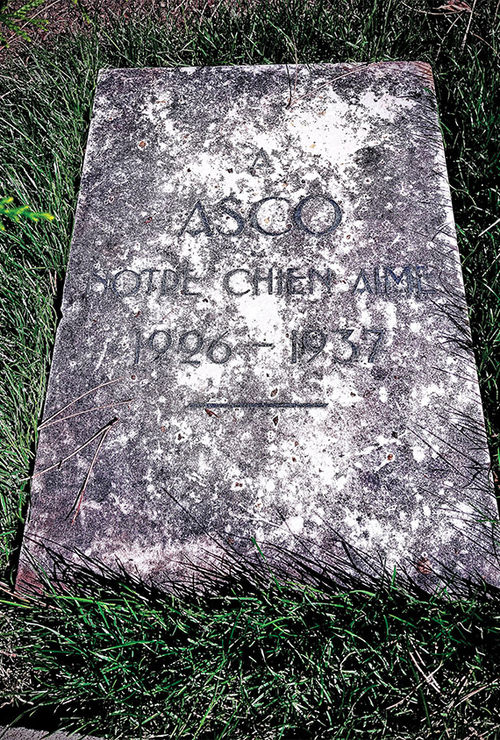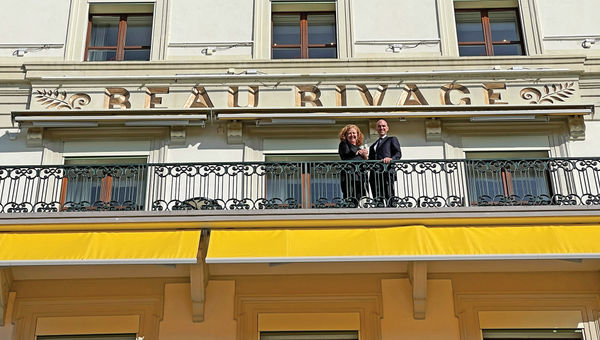Sometimes I think Switzerland simply has too many options for a relatively small country. That's not necessarily a bad problem, but it took me 10 visits before I found myself in what is now one of my favorite Swiss destinations: Lausanne.
It's as chic as the French Riviera, but without pretention. It's similar to Montreux, minus the palm trees and veneer of hipness. And situated on the northern shore of Lake Leman (aka Lake Geneva), its views of the French Alps are, truth told, better than the views the French have of the Swiss shore.
Lausanne also has one of the great palace hotels in Europe, the Beau Rivage. It was built in 1861 and doubled in size in 1908. Rooms in the older section were renovated during the pandemic; I say "renovated" rather than "updated" because although fixtures and amenities are contemporary when and where you want them to be, the overall feeling reflects an age of luxury that's closer to its original era than the modern one.
Rooms that I saw in the 1908 section -- technically, the "palace" -- had undergone a similar, earlier renovation and appear fresh.

The sitting room of a presidential suite at the Beau Rivage. Photo Credit: Arnie Weissmann
Inside the Beau Rivage
The lakeview rooms on the top floors of the original section are currently the most desirable, but the lower floors have their own advantages: When the property was built, it had no elevators, so rooms on the first two guest floors had the highest ceilings and most lavish decorations, enabling wealthy guests to have a sumptuous experience without having to climb too many stairs.

A grave marker for Asco, the dog of a Beau Rivage guest, in the hotel’s pet cemetery. The hotel no longer buries animals but will inter ashes or a favorite toy. Photo Credit: Arnie Weissmann
The upper floors were originally designed for servants. While the layouts in the upper floor rooms are now every bit as elegant as for those below, the height of the ceilings is not as grand, and small touches in the public areas are not as ornate.
The hotel has hosted peace conferences, celebrity weddings and, as several walls leading to Cafe Beau Rivage showcase, a who's who of international guests from song, stage, screen, sports and politics with a smattering of "miscellaneous" mixed in (e.g., moon-walking astronauts).
A bit of Beau Rivage trivia: There's a pet cemetery on the grounds for frequent guests' dogs (they no longer bury animals but will inter ashes or a favorite toy); and some of the sculptures in the garden were created by Edouard Sandoz, one of the Sandoz brothers who started the eponymous Swiss pharmaceutical company. In addition to his sculptures, one of his paintings hangs in Room 557 in the Palace section of the property. Beau Rivage is owned by the nonprofit Sandoz Family Foundation.

Chief concierge Sylvie Gonin and general manager Benjamin Chemoul of the Beau Rivage. Photo Credit: Arnie Weissmann
Fine dining and sights
During the summer and festive seasons, the hotel is filled with leisure travelers. The rest of the year, business and incentive groups fill the rooms. An advantage of going when there are more suits than swimsuits is that, because conferees have their meals on site, the city's best restaurants are more likely to have availability.
And there is no shortage of top-level restaurants. The extraordinary La Table, located in the Lausanne Palace hotel, recently received its second Michelin star. The young couple who run it, Sarah Benahmed in front of house and Franck Pelux in the kitchen, present dishes whose appearance is so artistic, so beautiful, so creative that one almost -- almost -- hates to upset them with knives, forks and spoons. The subsequent bursts of flavor are unexpected, complex and delicious. (A local couple at the next table told me La Table replaced a long-standing three-Michelin-star restaurant as their favorite.)
Although it has never hosted an Olympics, a stunning Olympic Museum is located in Lausanne, next to the Beau Rivage. I had grossly underbudgeted my time there; in 90 minutes, I barely scratched the surface. The games are broken into components: history, uniforms, events, artifacts (Muhammad Ali's -- at the time, Cassius Clay -- boxing gloves!), etc. It is a startlingly emotional experience; what caught me by surprise was how moving the presentation of highlights from opening ceremonies could be.
Lausanne is adjacent to a beautiful, terraced wine region with such an unusual methodology that it's a Unesco World Heritage Site. Most of the vineyards, established by monks in the 13th century, are small enterprises. Some can be toured; there's a store on the road that runs through it that sells local wines.
And just past the vineyards is Chaplin World, the house that Charlie Chaplin lived in after his U.S. entry papers were revoked during the McCarthy era. Those too young to remember him will find it's a great introduction to a great talent; those familiar with Chaplin will be exposed to sides of him they were likely unaware of.
Benjamin Chemoul, the general manager of the Beau Rivage, may have described Lausanne best, saying the atmosphere was "not necessarily casual, but comfortable." He had previously worked in Paris, where part of his job was to greet visiting heads of state. "Those same leaders behave differently when they come to Lausanne," he said. "Here, they are much more natural. It's amazing, everyone feels at ease very quickly in Lausanne."